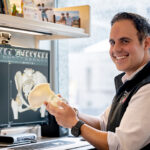Clubfoot bracing for an active boy: Finn’s story
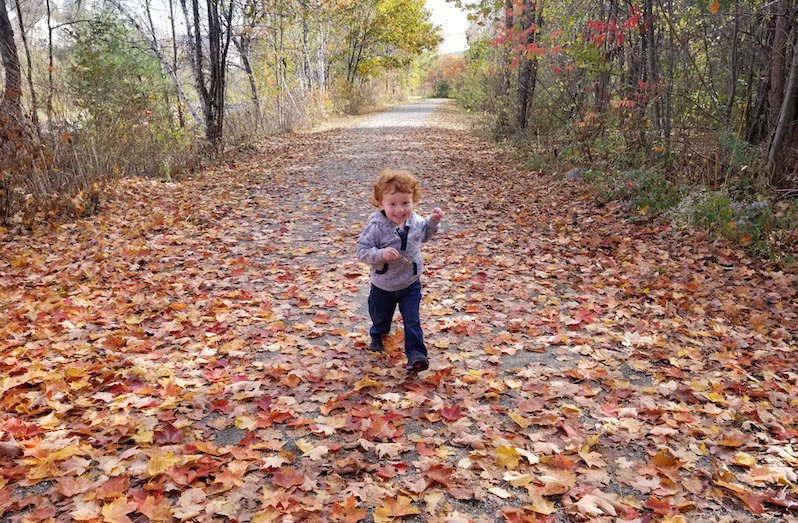
When Finn Beaulieu learned how to say elephant, he ran around the house repeating the word at least 20 times. When asked to rate his activity level, his mother Carolyn says, “He’s 2½, I would say his activity level is high.” Finn’s joy of movement can make it challenging for his parents to put him in his clubfoot brace. They consider this a win.
Learning what it means to have clubfoot
Carolyn and Tim found out their son would be born with clubfoot during a routine ultrasound. At the time, neither knew very much about the condition. “Our midwife told us not to Google it,” Carolyn remembers. “But we didn’t know anything about clubfoot. We had to Google it.” As often happens on the internet, the two found very different information. Carolyn read that clubfoot is sometimes related to spina bifida. Tim read that the condition is common and treatable.
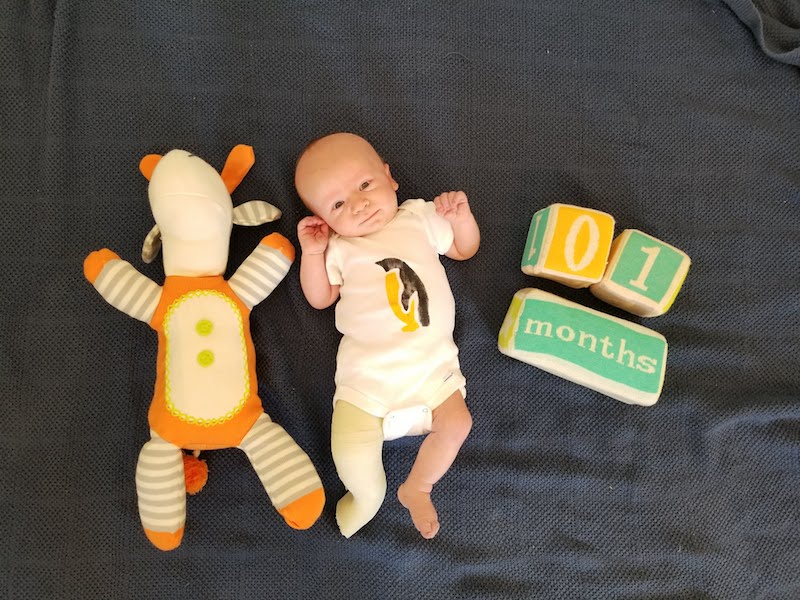
Within a few weeks, Carolyn met with Dr. Collin May in the Boston Children’s Hospital Lower Extremity Program. “Dr. May went through the medical details, what it means to have clubfoot, and how they would fix it.” And he confirmed the best-case scenario. Based on the ultrasound, their child’s clubfoot was not related to any other condition and would be highly treatable.
Finn’s clubfoot treatment begins
Looking back, Carolyn remembers how relieved she was that the most intense period of Finn’s clubfoot treatment was over by the time she returned to work. Finn had his first appointment with Dr. May when he was 3 weeks old. Dr. May stretched his foot outward and applied a corrective cast that held his foot in its new position. After one week, they repeated the process.
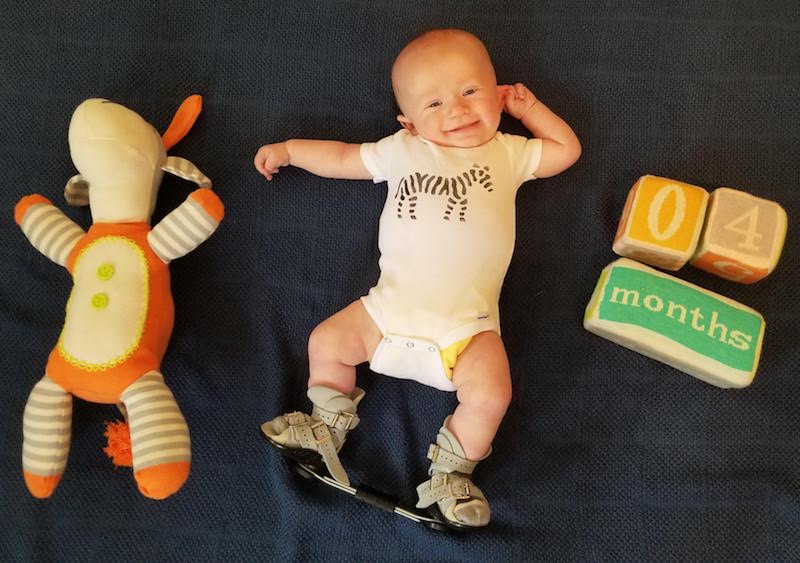
Typically, correcting clubfoot takes five to eight casting cycles. Finn was lucky, he only needed three casts. After that, he had a minor surgery to lengthen his Achilles tendon. Then he started wearing a brace. At first, he wore the brace for 23 hours a day. After three months, he was cleared to wear the brace for 12 hours each night.
Clubfoot hasn’t slowed Finn down
Finn is about halfway through his clubfoot treatment. His parents stretch his right foot every day, moving it up and down and tickling it to make the muscles react. The fact that it can be hard to get him to sit still for these exercises speaks to the success of the treatment. “He likes to run around, so I have to pick a time when he’s settled,” says Carolyn.
How does clubfoot bracing work?
After an initial casting phase to correct clubfoot, children wear a clubfoot brace to prevent the foot from turning in again. The brace is made up of special shoes attached to a bar that hold the feet in their ideal position. Children typically wear a brace until they are 4 or 5.
“Bracing takes time and commitment, but it doesn’t interfere with children’s ability to crawl, walk, or run,” says Dr. May. “And it’s the best way to ensure the feet stay in a good position as toddlers grow.”
He also continues to wear his brace from 8 at night until 8 in the morning. According to Dr. May, Carolyn’s efforts to maintain a consistent exercise and bracing schedule are a key factor in the success of his treatment. Carolyn feels lucky that Finn has adapted well to the brace. “On some nights he runs away when we bring the brace out,” she says. “On other nights, he tries to put the boots on himself. We’ve followed Dr. May’s advice to a T and that has helped.”
Looking ahead, Carolyn is pretty sure Finn will barely remember his clubfoot treatment, if at all. In the meantime, she is happy to offer advice to other parents who have recently found out their child will be born with clubfoot. “Find a good doctor at a good hospital who will meet with you before your delivery date. Your doctor should be knowledgeable and approachable. Parents should know that a clubfoot is completely treatable.”
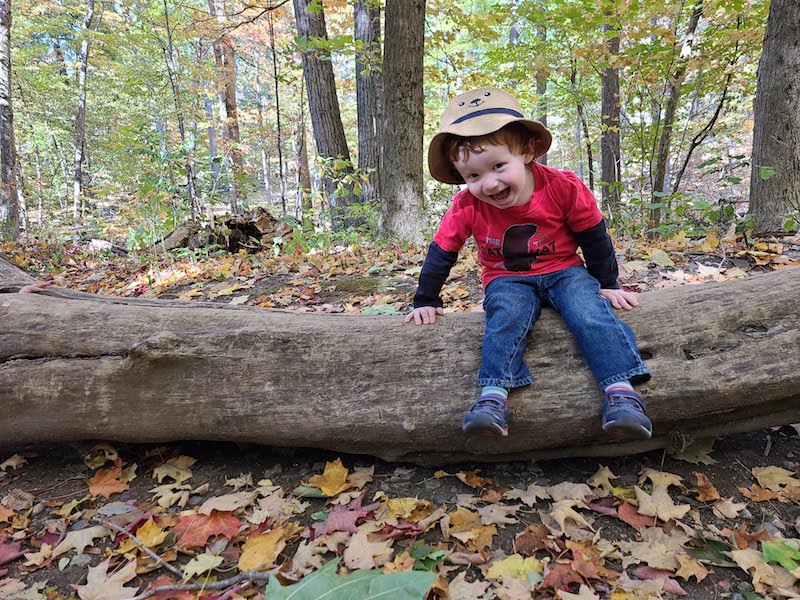
Learn more about the Lower Extremity Program.
Related Posts :
-

Diagnosed with clubfeet before he was born: Gabriel’s story
Cheryl Bratt and her wife, Sue, expected a routine visit when they went in for their 18-week ultrasound. Cheryl, a ...
-

When your baby has clubfoot: Answers for expecting parents
Treatment for clubfoot usually begins within a few weeks of a child’s birth. With prenatal ultrasound, parents often learn ...
-

3D imaging could become standard practice in orthopedics. Here’s how.
It took a trained eye to see the abnormality on the patient’s X-ray. There, hidden behind the acetabulum was ...
-

A safe, pain-specific anesthetic shows preclinical promise
All current local anesthetics block sensory signals — pain — but they also interrupt motor signals, which can be problematic. For example, ...




